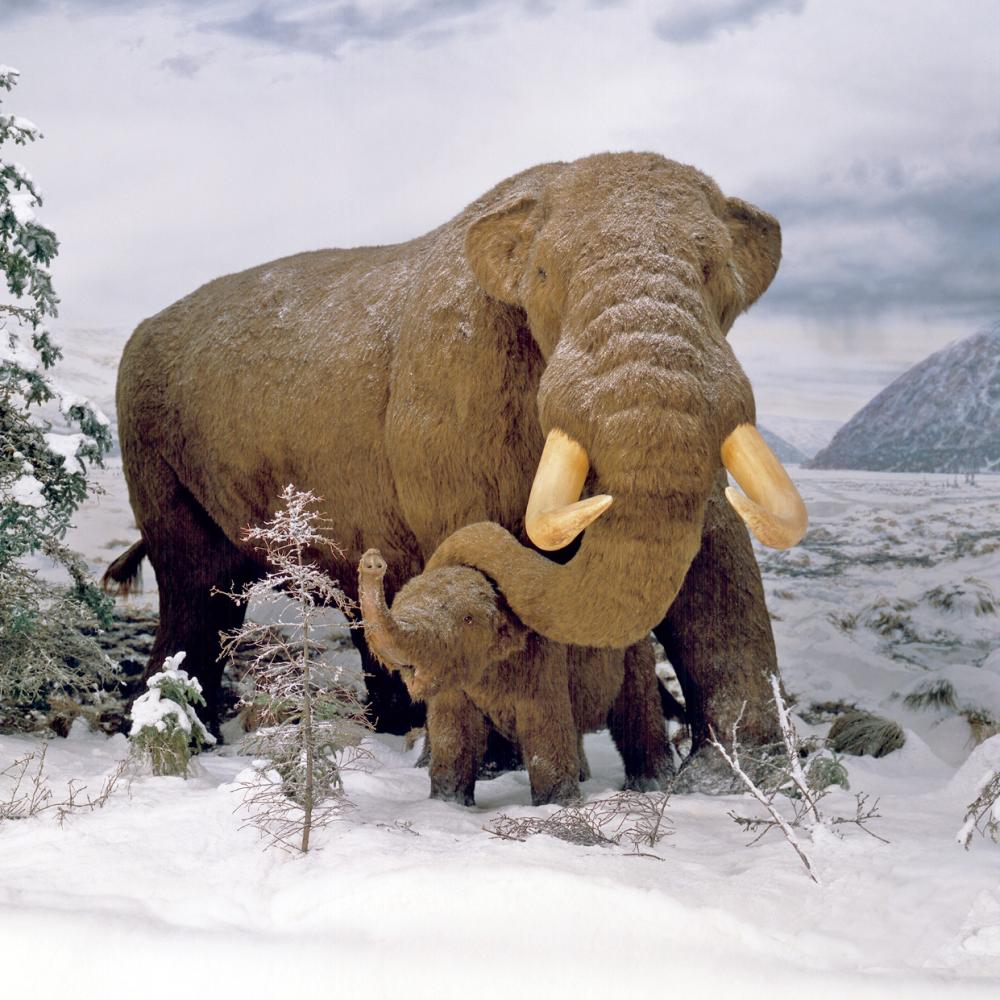Find out more about the fascinating world of ice-age animals in this comprehensive article. Discover their unique adaptations and fascinating behaviors as well as their diverse species. Learn more about the secrets of mammoths, saber-toothed cats, and more.
Table of Contents
What are Ice Age Animals?
The Earth experienced dramatic changes during the ice age, due to extensive glaciation that altered the geographic landscape of the world. The frozen landscape did not prevent the existence of an array of resilient and astounding creatures, however.
A great deal of adaptation was required for animals of the ice age to survive in extremely cold conditions. A world sculpted by ice was a world where they thrived due to their physical features and behaviors.
Types of Ice Age Animals

1. Woolly Mammoth
Woolly mammoths are giant, shaggy animals that are considered icons of the Ice Age. The long, curved tusks and thick fur of this animal allowed it to easily pass through the icy tundras.
2. Saber-Toothed
Saber-toothed tigers were formidable predators distinguished by their fearsome canine teeth. It was an exceptional hunter due to its powerful build and exceptional agility.
3. Giant Ground Sloth
The giant ground sloth was larger than modern sloths and had enormous claws as well as an imposing frame. The animal consumed vegetation and moved slowly across the landscape.
4. Dire Wolf
The dire wolf was similar to a large version of its modern relatives; it hunted in packs and possessed a powerful bite. The success of this organization was due to its sharp senses and social nature.
5. Glyptodon
Glyptodons were colossal creatures covered in plates of armor that appeared similar to giant armadillos. The tough exterior of the animal protected it from predators, allowing it to forage in safety.
6. Megaloceros
A species known as the “Irish Elk,” the megaceros was equipped with antlers that spanned a length of over 11 feet. Mating rituals likely involved the display of these antlers.
Adaptations of Ice Age Animals: Survival Strategies
1. Thick Fur
The animals of the Ice Age possessed thick fur to protect themselves against frigid temperatures. They remained snug and comfortable despite the icy winds thanks to their fur, which trapped warm air around their bodies.
2. Migration
A variety of ice-age animals followed the available resources as the ice advanced and receded. During their migrations, they searched for food, water, and suitable habitats. They often encountered treacherous conditions during these journeys, but they were crucial to their survival
3. Navigating the Ice Age Menu
There was a distinct diet for each animal during the Ice Age, which was tailored to the available vegetation or prey. It was the grasses that provided food for woolly mammoths, while the saber-toothed tiger sought out large herbivores. Their specialized diets enabled them to survive despite the challenging environment in which they lived.
Behaviors of Ice Age Animals: Tales from the Glacial Era
1. Social Bonds
Many animals were living in herds or packs during the Ice Age, exhibiting social behaviors. The dynamics of this group provided protection, enhanced hunting strategies, and allowed for the facilitation of mating activities. Their survival depended on the strength of their social bonds.
2. Communicative Calls
There were a variety of vocalizations used by ice-age animals for communication. Whether they were warnings, mating calls, or simply a means of maintaining social relationships, these calls served several purposes. They were able to navigate the frozen landscape successfully by deciphering these sounds.
FAQs
1. How did ice-age animals cope with the extreme cold?
Animals living during the Ice Age had adaptations such as thick fur and layers of blubber to protect themselves against the cold. A common strategy was to migrate to warmer climates.
2. Were there any ice age animals that are still alive today?
It is not true that the animals of the ice age are extinct as we know them today. However, there have been some descendants of these animals that still exist today, such as elephants and wolves.
3. Did ice age animals live in all parts of the world?
There were predominantly ice age animals found in areas that experienced glaciation, including parts of Europe, North America, and Asia.
4. What caused the extinction of ice age animals?
Their exact extinction remains a mystery, but climate change, habitat loss, and human hunting are likely to have played a significant role.
5. Did ice age animals have any natural predators?
Yes, there were natural predators for ice-age animals. The saber-toothed tiger, for example, hunted herbivores such as woolly mammoths in packs, while the dire wolf hunted in packs.
Conclusion
There has been a lasting impact of the ice age animals on the history of our planet, which illustrates the remarkable resilience and diversity of life on this planet. They thrived despite adversity due to their remarkable adaptations, behaviors, and interactions, leaving us in awe of their achievements.



